Here’s a fun gardening “Did you know?”
Did you know you can eat the fern-like leaves of the asparagus plant?
It’s true!
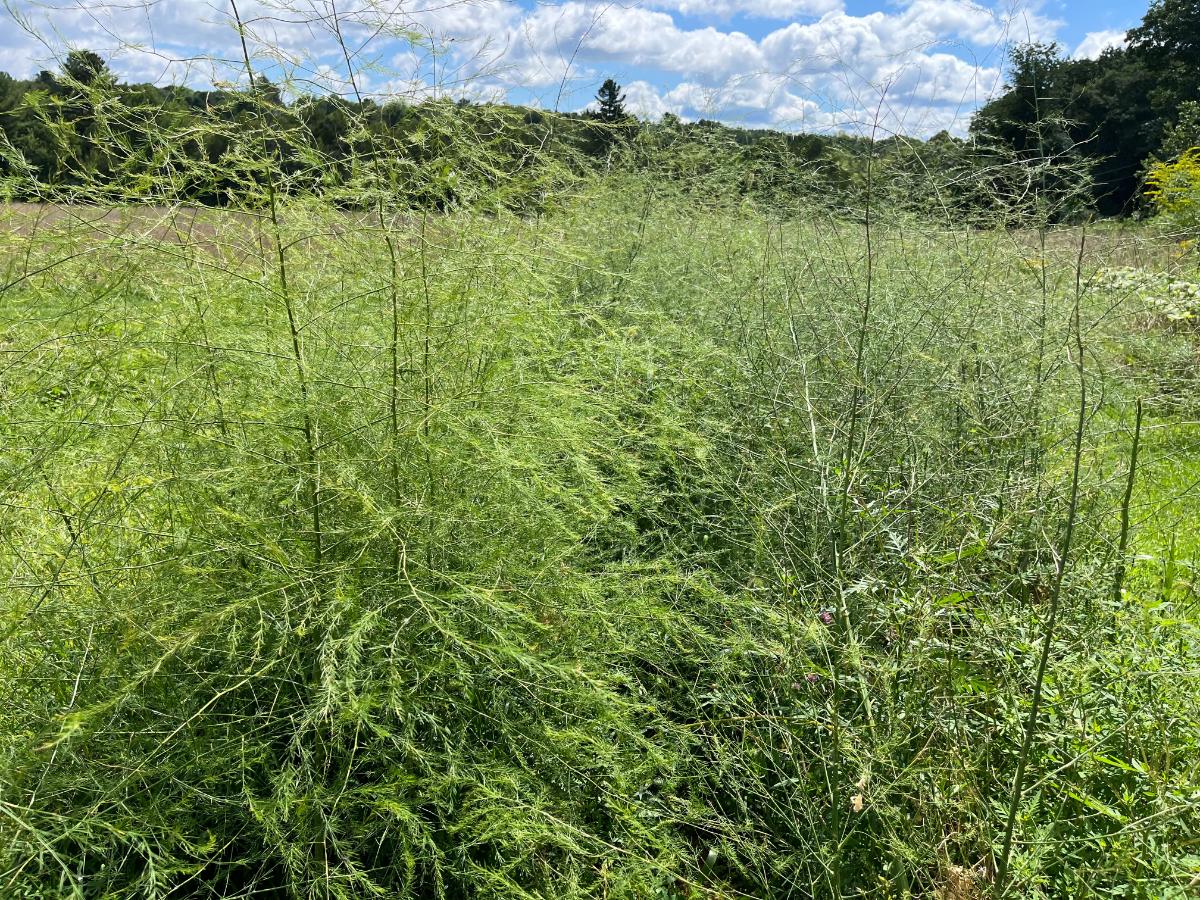
There is more that you can do with asparagus after the typical spring harvest. Asparagus leaves (those fern-like leaves of mature, tall plants) can be harvested and eaten all summer.
Jump to:
Asparagus – More than just a spring vegetable
Now, we’re not going to pretend that asparagus leaves are the bounty that the early spring spears are, but they can be picked and eaten, and they do have some use and value throughout the rest of the summer.
As a matter of fact, you could still eat the stalks of the mature asparagus plant. Most of us don’t because they don’t quite match up in flavor, and, more importantly, they become woodier and aren’t very appealing in terms of texture.
There is no other reason you couldn't eat mature asparagus stalks or shoots that come up from the bottom over the course of the summer. In other words, they’re not toxic, and they are still food. With one exception --
Beware the toxic asparagus berries
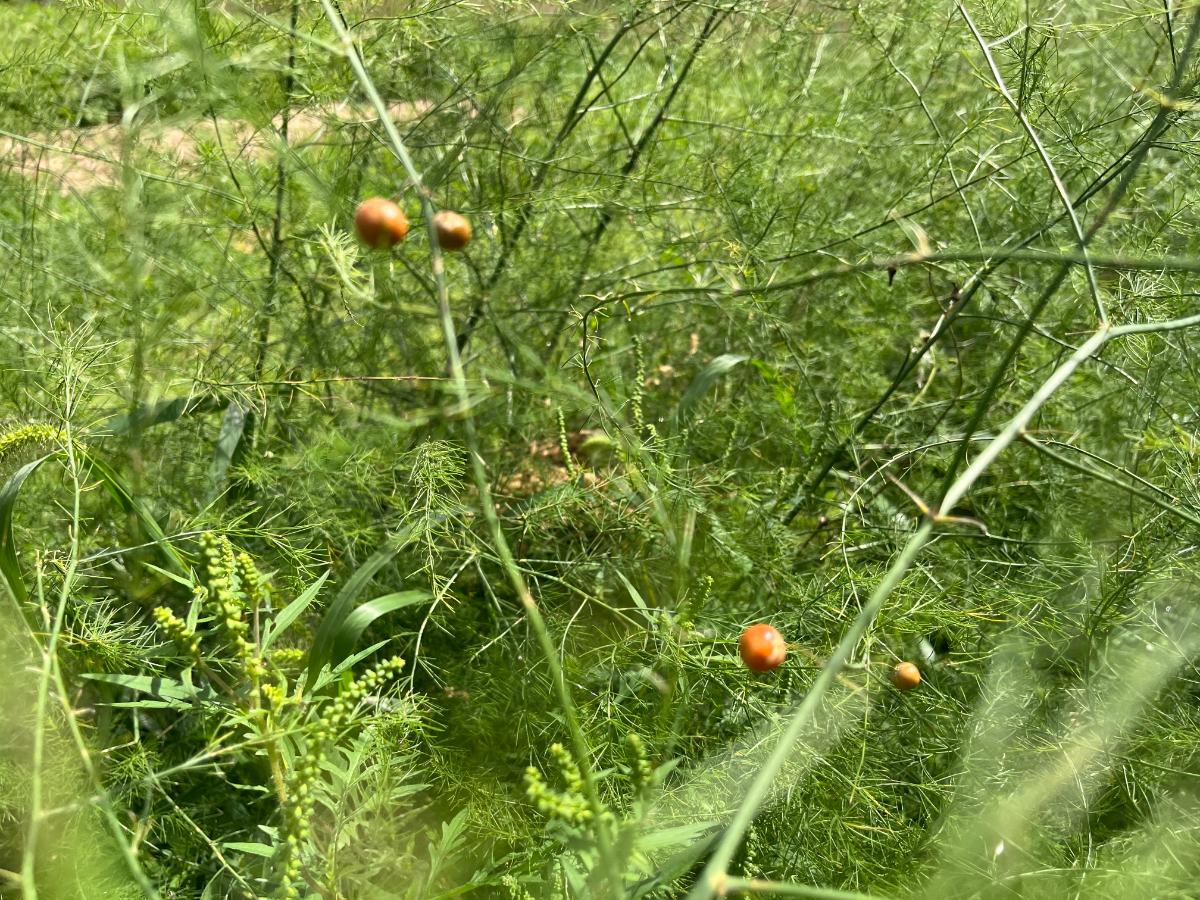
The red berries that grow on asparagus plants are toxic. This is described by the University of North Carolina Extension Service as a low toxicity that mainly causes gastrointestinal upset like vomiting and diarrhea.
It’s not likely that the berries will do you lasting harm, but you should not eat them, regardless.
Not to be confused with the Asparagus Fern
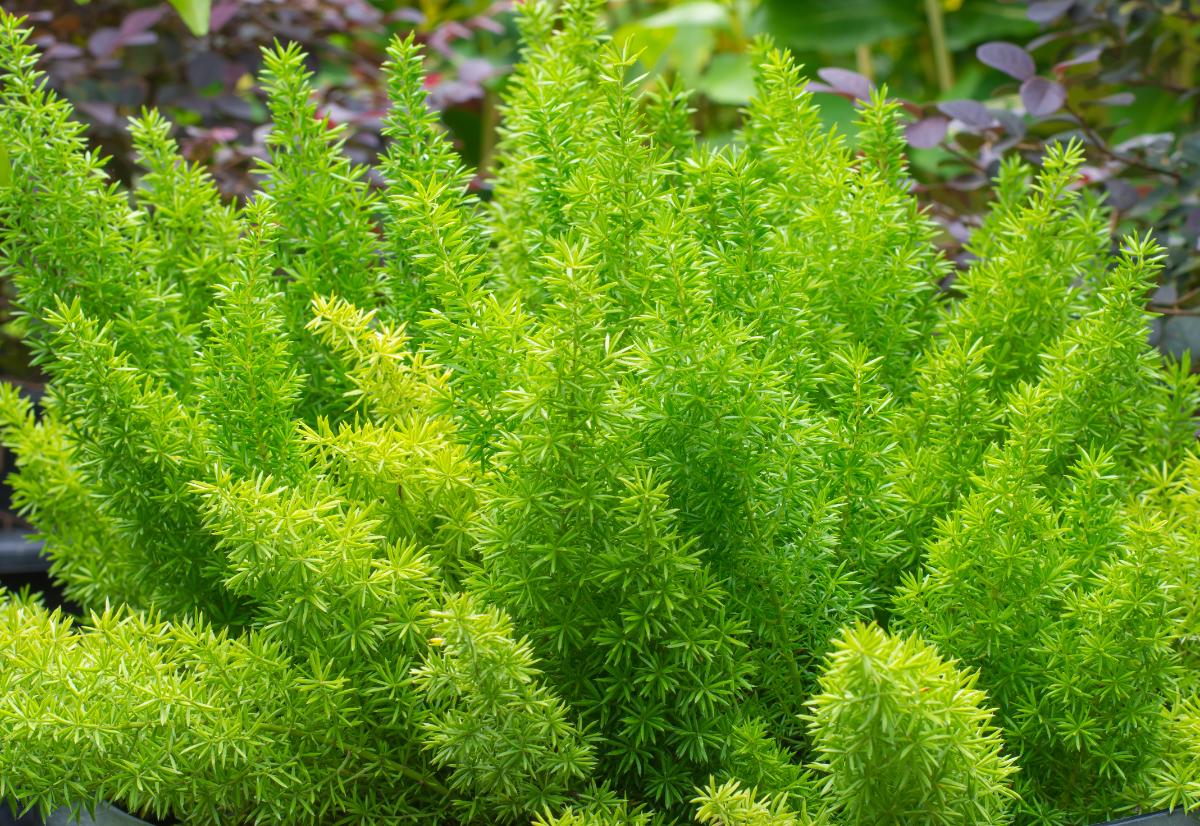
There are ornamental ferns called asparagus ferns. Depending on where you live, they may be kept indoors as houseplants or outdoors as ground-covering perennials.
They have a somewhat confusing classification, and the common name “Asparagus Fern” seems to apply to several different species.
None of these are the plant we are referring to. That plant is not considered edible. Some resources say asparagus ferns can be toxic, and no part of these ornamental plants should ever be eaten.
The plant we are discussing in this article are varieties of the common garden asparagus, Asparagus officinalis.
How to Harvest and Use Asparagus Leaves
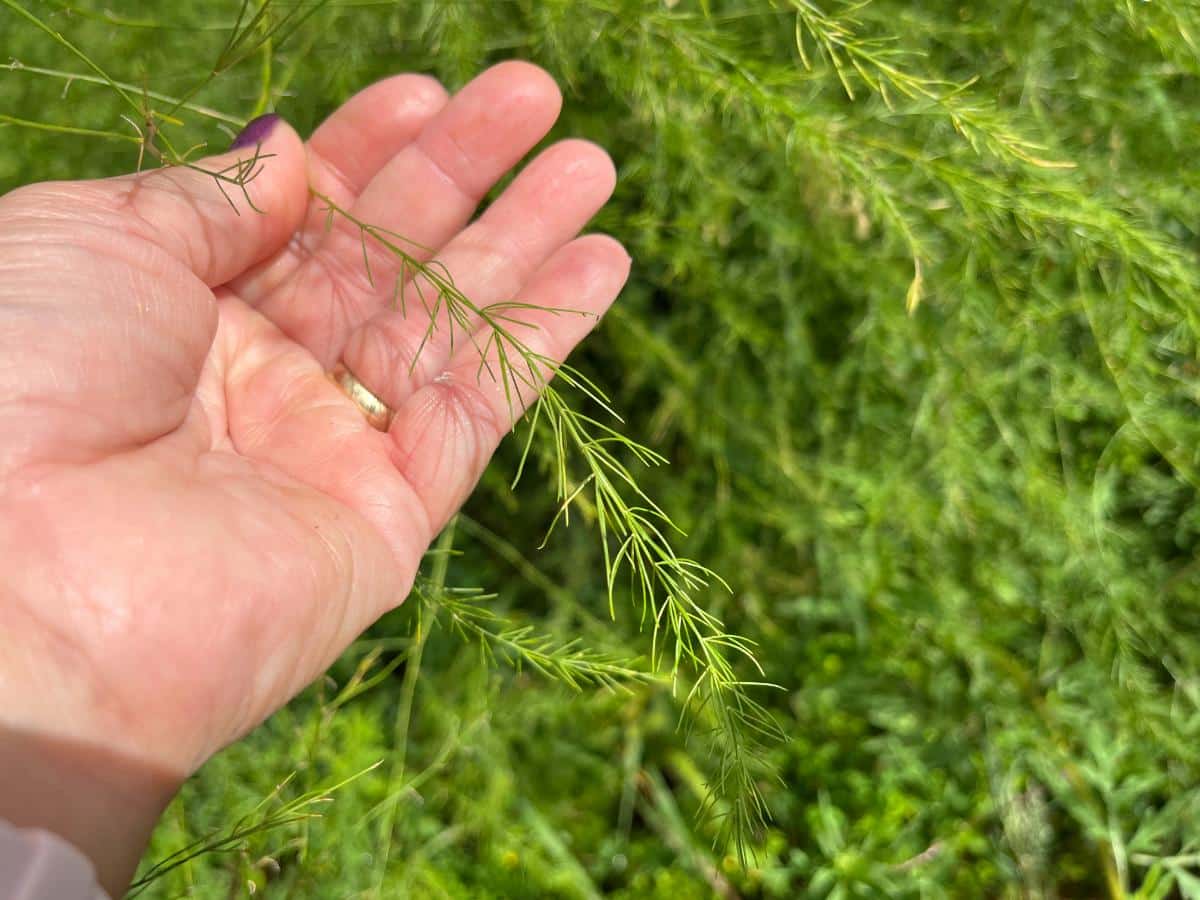
So, how do you pick asparagus leaves, and what can you do with them?
Picking asparagus leaves
Harvesting the leaves of the asparagus plant couldn’t be easier.
- Snap off leaf sections from the branches of the mature asparagus plant
- You can go back as far as you like to harvest what you want
- You may find the leaves at the tips are more tender, but for the most part, the whole branch is the same “age”
- Avoid overharvesting your asparagus leaves
A note about overharvesting asparagus leaves
One of the reasons we don’t usually do much with mature asparagus plants or harvest spears after the late spring/early summer harvest is that we don’t want to overharvest and kill the asparagus crown.
The plants are heavy feeders, and they need a lot of good, strong stalks with leaves to feed the crown during the rest of the summer and into the fall (up until fall frost). This is what keeps your asparagus going as a perennial plant that will feed you for a decade or more.
The leaves on the asparagus plant are needed for photosynthesis to produce chlorophyll to feed the plant, the roots, and the crown.
If you harvest too many spears in the early summer or don’t stop harvesting when the spears get thin and slow down, you can end up starving the crown.
You can also starve the crown if you take too many of the leaves away and then the plant can’t photosynthesize.
A general rule of thumb is that you can take up to 25 to 30% of a plant’s leaves without stressing it too much. Truth be told, there are only a few ways to use the leaves of asparagus, and they don’t add up to much, so you’re not likely to need that much anyway. But if you do find you like the leaves and like using them, keep this in mind and avoid harvesting too many asparagus leaves.
To avoid overharvesting:
- Harvest the leaves only when you plan to use them
- Take no more than 30% of the leaves off an individual asparagus plant
- Move around your asparagus patch and harvest a little bit from several plants
- Allow the plants to rebound and regrow before hitting them too hard again
- Maintain good asparagus patch health and wellness, including weed suppression and fertilization throughout the season
Using and Cooking with Asparagus Leaves
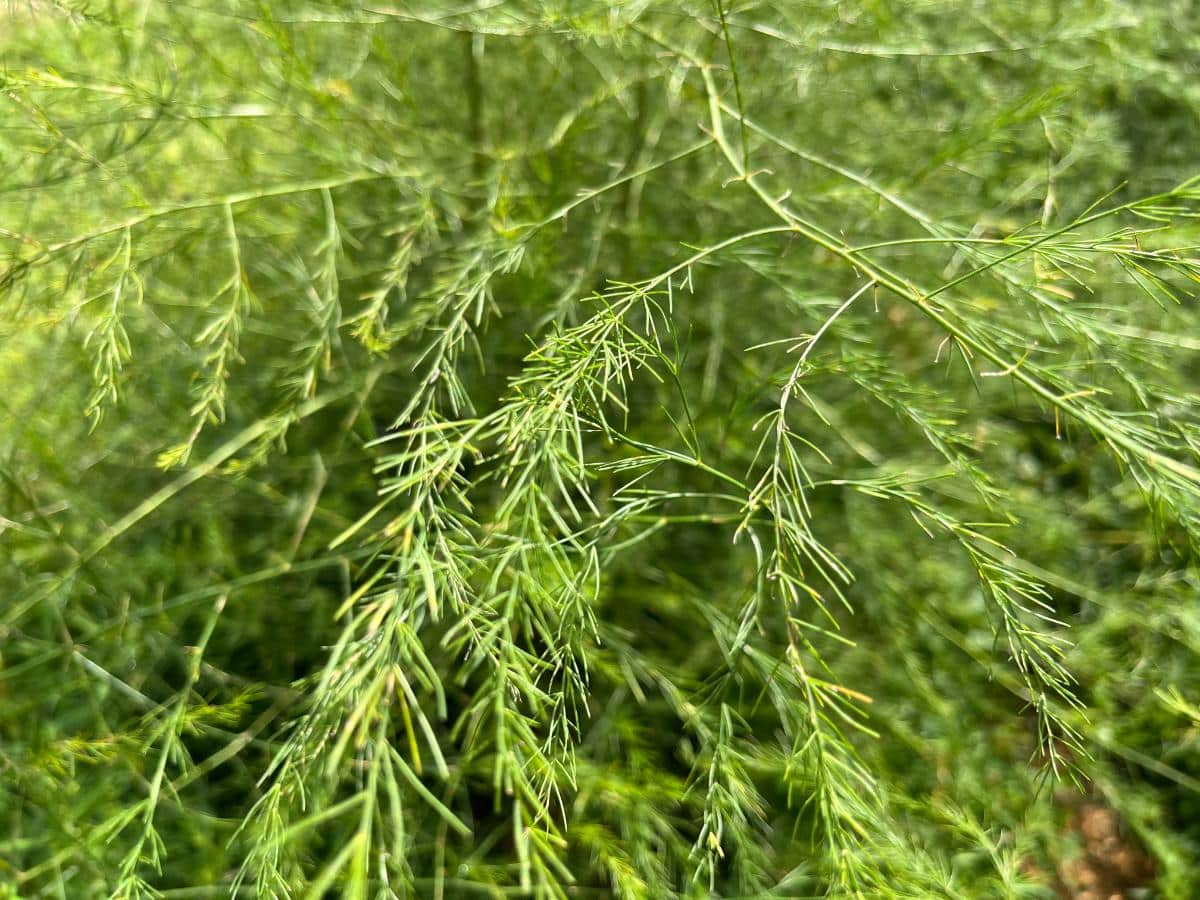
The leaves of asparagus are light and airy looking. They have a central stem with small, thin leaves about an inch long.
The center stalks of asparagus leaves can be tough, so some people choose not to use them. Much depends on how you’ll use your leaves (for example, cooking or sautéing the leaves can soften them).
The most popular way to prepare asparagus leaves for eating is this:
- Strip the leaves off the central stem
- Hold the stem in one hand and pinch and run your fingers up the stem to remove the small leaves
- If you prefer, you can chop or cut these down into smaller pieces
- The leaves will look similar to rosemary leaves (but thinner) or a lot like the leaves of the dill plant – what is commonly called dill “weed” but is really the green part (which is quite flavorful and edible, too!)
Ways to use asparagus leaves

Once stripped, asparagus leaves can be used fresh or in cooking. Here are some suggestions:
- Use like an herb for a light asparagus flavor
- Use in soups
- Use as a flavoring for roasted potatoes, carrots, sweet potatoes, and other vegetables
- Sautee as a vegetable side dish (though it can be hard to get enough to add up to a dish on its own and is usually better mixed or used as seasoning)
- Use as a garnish
- Use in garden salads
- Use in pasta salads
Asparagus leaves may not be the bumper crop that a lot of other vegetables are in the summer, but it is nice to be able to get more use out of a plant you already have and to have something new to spice up life in your kitchen.
Using asparagus leaves, along with other uncommon edible parts of plants we don’t usually eat, brings even more variety from our gardens to our tables.



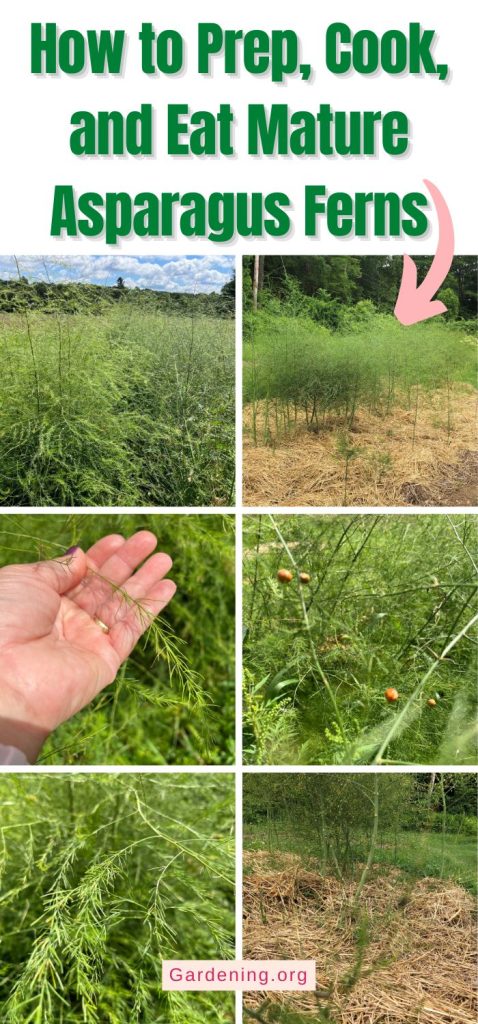
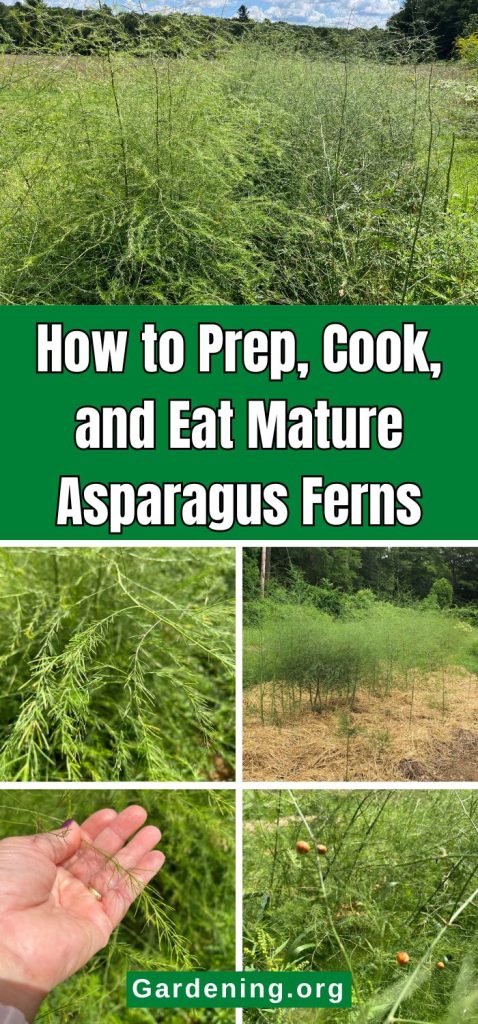


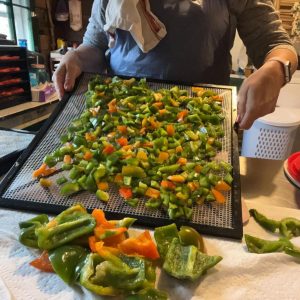
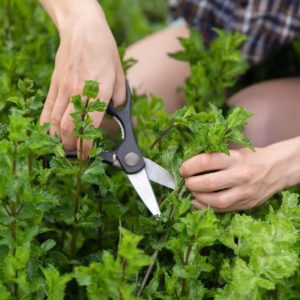
Leave a Reply